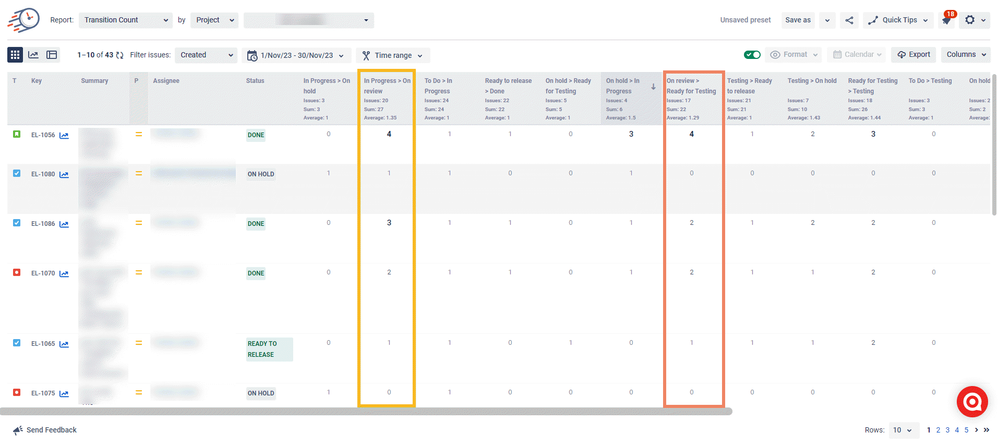Manage OKRs in Jira with Time in Status Data
📝 Context: Teams use the OKR (Objectives and Key Results) framework to set and track ambitious goals. OKRs help organizations achieve significant breakthroughs by focusing on measurable outcomes within specific periods. |
|---|
🤔 User Problem: Teams struggle to effectively track the progress of their OKRs and identify bottlenecks in their workflows. They need a way to monitor task statuses, transitions, and individual performance to ensure they are on track to meet their objectives. |
|---|
What is OKR
The advantage of the OKR methodology is that it primarily focuses on achieving the desired result within a certain period (quarter, half-year, year). OKR also helps companies make significant breakthroughs, as it involves setting ambitious goals that may initially seem unattainable.
The essence of this methodology lies in the name.
O = Objective is a global goal. It describes where we are going, what we are striving for, or what we want to change in a certain period.
KR = Key Result - a fundamental result in relation to the Objective. It shows the stages of progress toward a goal, metric, or other assessment.
Objectives answer the questions "What do we want to achieve?", "Why?". Key Result - "How will we achieve it?".
The goal can be abstract, but the Key Result is as concrete as possible.
How to set OKR goals
First, you must decompose the Key Result (KR) into Key Tasks and Actions. It is necessary to make the goals work, not just be written on paper.
Key Tasks (KT) are the tasks that must be completed to achieve the KR. Usually, KTs take more than one business day to complete.
Key Actions (KA). A set of small tasks must be completed to close Key Tasks. Typically, KA are tasks that take less than 6 hours to complete.
The main idea to focus on is the relationship between your overall goal and daily specific tasks. This is a crucial aspect of the effectiveness of the OKR methodology in business, where each global goal is transformed into a realized daily task. In addition, breaking down goals into components helps to objectively assess progress toward achieving the objectives.
Time in Status Report
Select the Time in Status report, a selection of tasks by a specific attribute (Project, Filter, Label, Sprint, Epic, Assignee, Reporter, JQL), choose an issue range and time range, and get precise analytics on the time tasks are in different statuses.
Here, you can identify bottlenecks, where Key Tasks and Key Actions are paused, etc. For example:
Understand the blockers. Why do tasks move and stay in the On Hold status for a long time?
Is the team working productively if tasks have been in a To-do status for a long? The goal decomposition was incorrect and needed to be corrected.

Transition Count Report
Transition Count - counts how many times the issue moved between different statuses. This report will help you find bottlenecks in the issue process. Why was the issue frequently sent back for revision? Could there be a problem with developer productivity if a task is often returned from the testing stage for review?

Assignee Time Report
Is the team coping with the tasks, but there are nuances for individual team members? Time reports will help you analyze the situation in detail.
For example, we can analyze how much time employees spend on tasks when a specific individual sets the task.
What is this for? If this individual is a PM, Team Lead, etc., they must set SMART tasks that are clear and understandable. We can only expect the tasks to be fulfilled efficiently if they are clear.
Therefore, this report can help us consider another hypothesis—perhaps Key Tasks and Key Actions need to be clearly defined in the Jira issue. Therefore, there are obstacles to their implementation.

Sprint Report
If we set goals, for example, for a quarter, it does not mean we will only evaluate whether we succeeded at the end of this period. We need to do periodic reviews. Sprint Performance Report offers a Time in Status app for this purpose.
Try grouping your Key Tasks and Key Actions into sprints and then use this report every two weeks to evaluate and analyze your progress with informative charts. Use the power of visualization to the fullest!

📈 Outcomes:
|
|---|
If you need help or want to ask questions, please contact SaaSJet Support or email us at support@saasjet.atlassian.net
Haven't used this add-on yet? Try it now!